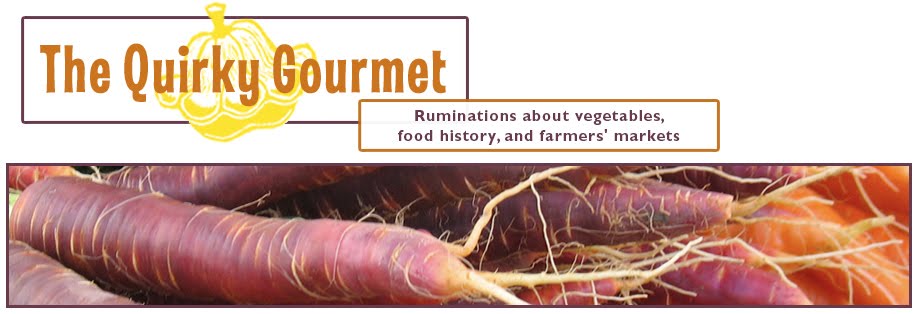
About four years ago I started thinking seriously about the future, and I came up with a five year plan to set up my business so I could sell it, and transition to a career writing about sustainable food.
My vision has shifted since then. In the process of setting up my business so I could sell it to someone else, it's evolved into an enterprise that meets my needs so well that I want to keep it. My thoughts about sustainable food have changed as well: I've discovered that nothing is as simple as it seems. I used to think that if everyone could just see the light and eat local, sustainable food, everything else that was wrong with the world would eventually work itself out.
These days I see the problems with our food chain as a symptom of deeper, broader difficulties like greed, hegemony and colonization. I certainly feel called to spread these insights by writing about them, but it's hard to imagine that this will turn into a career that will support me. It's a complex message, not a tidy one that is easy to sell, and my challenge is to work at my own pace to figure out the right way to communicate it. I enjoy writing this blog, though the traffic is nothing to write home about. (And I really do appreciate those of you who read it regularly.)
Working on both of my cookbooks during the spring of 2008 I realized that creating book length manuscripts suits me well. I love immersing myself in a project, and I enjoy the give and take of working with engaged, professional editors. I spent the winters of 2007-2008 and 2008-2009 putting together a book length manuscript that gives a historical perspective on the current sustainable food movement, and this winter I've been sending it around. I got an exciting nibble last week, but sometimes (more often than not) a nibble is just a nibble. So we'll see.
Because the economy has been difficult, and because I'm getting too old to keep saving money over the summer and then depleting it all winter, I decided to try to earn a living this winter doing something other than running my business (which can't support me over the winter anyway.) I taught some classes at PCC. I was surprised by how much I enjoyed that.
I've also been doing some online copywriting for a company that is, for all practical purposes, a content factory. They gather information about key words that folks submit to search engines, and they pay freelance writers to write articles targeted to the search terms. The articles get traffic, the company gets ad revenue, and the writers and editors get paid. Despite my ambivalence, this has worked well for me this winter. I've been working from home, making my own schedule and earning a living. For the first time ever, my bank balance is higher at the end of the winter than it was at the beginning. Not by much, but it still feels like an important milestone.
A few weeks ago, things started to change. The company's editors seemed to change their standards and criteria overnight, demanding scholarly references and extensive rewrites. I don't have anything against scholarly references and extensive rewrites under the right circumstances, but not for the amount they pay per article.
Fortunately, this happened right around the same time my business started getting back into gear. I also got started with a new writing project of my own which has been germinating all winter. Now I wake up in the morning and I get started right away on my own stuff. If there's time later in the day, I generate content.
It feels good. I'm looking forward to market season.








































